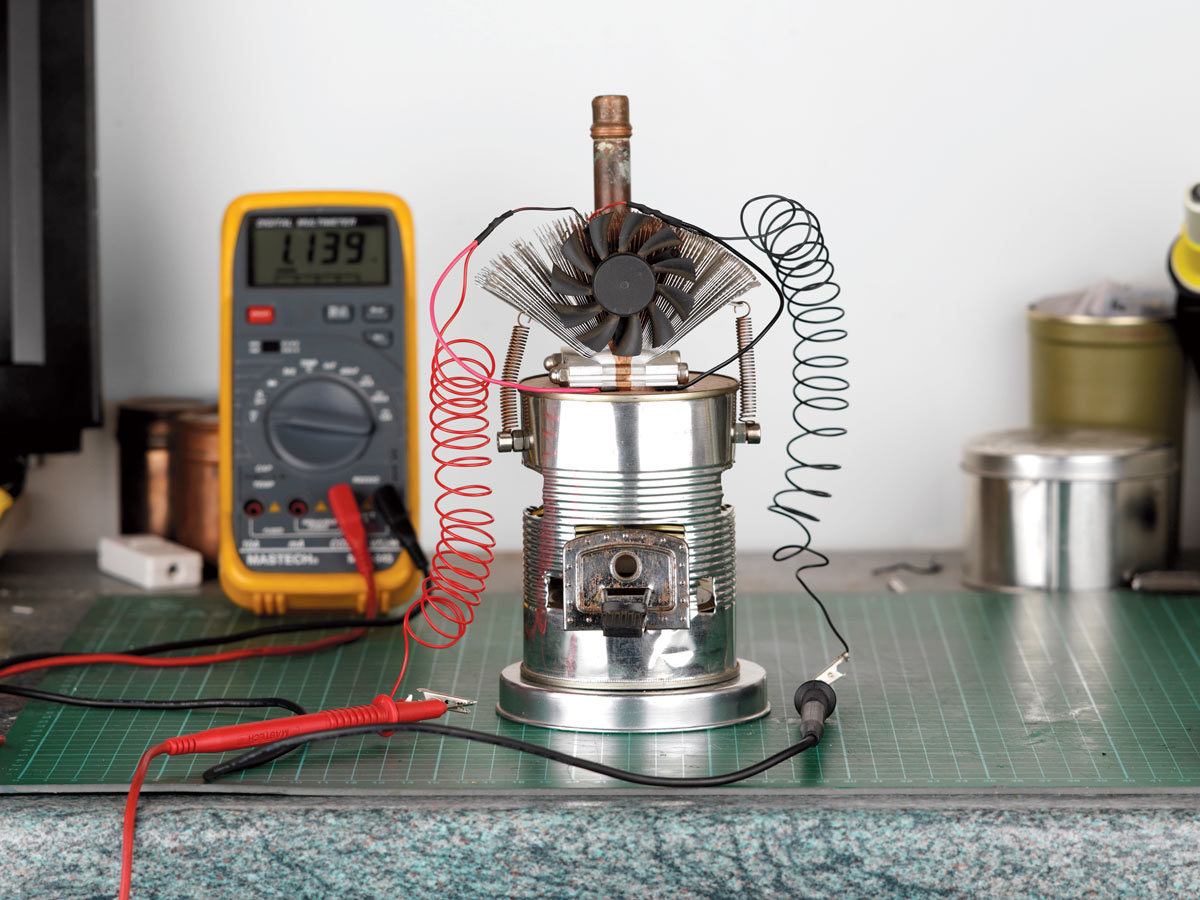
Peltier cells are flat devices that draw heat from one side to the other through a thermoelectric principle called the Peltier effect. The cells are commonly used to pump heat away from CPUs or graphics cards, and are also found in camping coolers and heaters. The Amazing Seebeck Generator uses one of these devices in reverse, to turn a heat differential into electricity, rather than using electricity to produce a heat differential.
I originally made the project because I wanted something like a steam-powered generator, but without the noise and maintenance issues associated with steam. I was pleasantly surprised when I found that my $5, 37-watt Peltier cell from eBay could capture the heat from a single tea candle or alcohol burner and use it to generate about 5 volts at 1 amp, which made it perfect for powering radios, mobile phones, and LED lights. You can make the Amazing Seebeck Generator in less than an hour using mostly scrap or recycled parts, and it has a distinctly steampunk feel to it.
In the Cooler
The Peltier and Seebeck effects exchange temperature differences and electricity. In a thermoelectric cooler, aka Peltier device, alternating slices of different semi-conductor materials connect in a zigzag pattern between 2 plates. Heating one plate drives electrons away in one material while attracting them in the other. This induces an electric current in 1 direction — the Seebeck effect. Conversely, running a voltage across the junction draws heat toward one side while cooling the other — the Peltier effect.
The multiple junctions in the zigzag work in parallel, which multiplies the effects. Whether the device is used to convert a heat differential into voltage, or vice versa, it performs the conversion with no moving parts.
Unfortunately, thermoelectric devices are typically only 1%–2% efficient, or 5% with the latest advances. This isn’t enough to make large-scale thermoelectric power generation (TEG) practical, although many researchers are trying to raise the efficiency. But thermoelectric generators are useful for other things; they can measure extreme differences in temperature, and are used in heating systems to power convection fans and pumps by using waste heat recovered from stovepipes and boilers.
The principle behind our Amazing Seebeck Generator is simple. We position our Peltier cell horizontally over our tin-can “furnace,” heat the underside with a candle or alcohol burner, and cool the topside with a heat sink and fan.



















